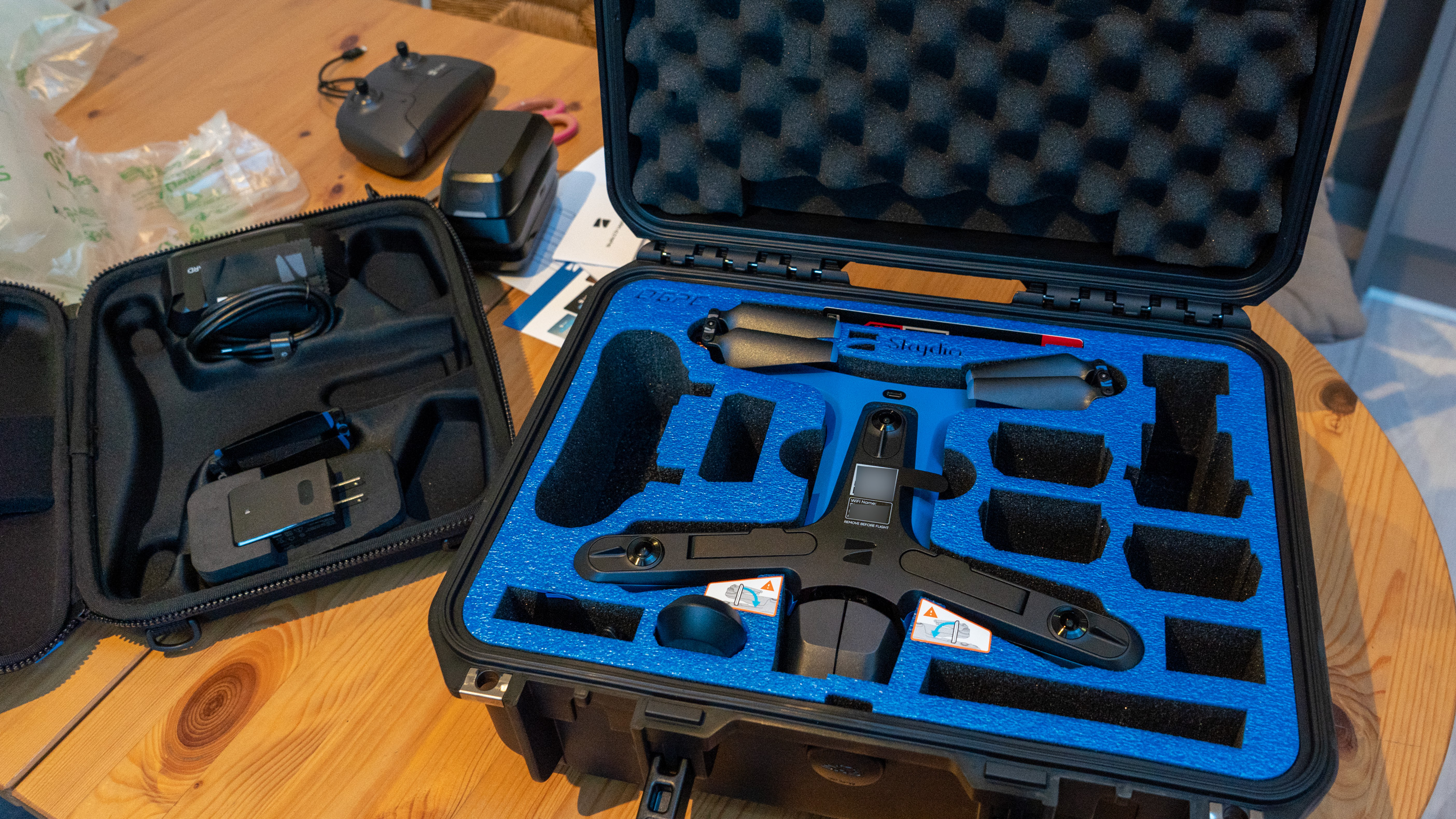Is this the real reason American drone firm Skydio couldn't cut it?
The HoverAir X1 is cheaper and lighter — did Skydio's smarts make things too complicated for consumers, and itself?

In their own ways the Skydio and the HoverAir X1 are both amazing drones, but from the consumer's perspective they both have the same basic premise: to follow you or your subject and record what you do. One of them uses all-round cameras and AI processing to see where it's going. The other has a safety cage.
You might imagine, in a year in which AI is seemingly everywhere, that Skydio – the Silicon Valley firm which has been perfecting the tech for the better part of a decade – would be everywhere. But it's the one in retreat, hiding in the largely protected niche of military and enterprise (though it's still producing new Skydio drones for that crowd).
Co-founded in the same year as Skydio, however, Zero Zero created the HoverAir X1 (or HOVERAir, or Hover – it's had a few name changes). Instead of fitting the drone with vision cameras all around, and the processing power to handle data from all of them, the company went with simple, light and elegant. One camera does the tracking, never letting you out of its sight, and safety is boosted by surprisingly low weight and simple cages for the propellers.
I've got to admit, having reviewed both, that I can see why, even before people tried it, the promise of the HoverAir X1 was enough to smash through its Kickstarter (it's now on sale in the UK and USA) while Skydio has retreated into the enterprise and military markets.
Not that those aren't big, potentially significant areas of income, but they also come with a good deal of government protection that keeps Chinese firms out – meaning it isn't necessarily the best that wins. Those spaces are also a little more likely to tolerate high prices than the average consumer.
The HoverAir X1 is around half the weight of an 'ultralight' drone like a DJI Mini 4 Pro, and costs less. It has a distinct and limited feature set – it doesn't even come with a controller – but for some people that's actually a massive plus. The drone makes you the star and, once it's finished, comes back like a loyal puppy, landing on your hand without risk of injury.
We often forget about simplicity in the rush to solve issues with tech, and the HoverAir X1 still uses tracking technology and AI but sets itself limited goals – which happen to be all that most users need.
The best camera deals, reviews, product advice, and unmissable photography news, direct to your inbox!
Personally, I loved the Skydio 2+ and all the deep functionality, and still hope that the company will one day see the light and challenge the big Chinese firms in the consumer space.
It's hard to imagine that it will, though. Chinese companies had it beaten on price and portability, and its one selling point – smarts – has also been achieved for the average user (and far more conveniently). The American tech might be able to do more, but did anyone stop to think who needed it?
If you're interested in where these drones sit in the wider market, read our guide to the best drones for beginners, or take a deep dive into the best camera drones overall.
If you're interested in where these drones sit in the wider market, read our guide to the best drones for beginners, or take a deep dive into the best camera drones overall.

With over 20 years of expertise as a tech journalist, Adam brings a wealth of knowledge across a vast number of product categories, including timelapse cameras, home security cameras, NVR cameras, photography books, webcams, 3D printers and 3D scanners, borescopes, radar detectors… and, above all, drones.
Adam is our resident expert on all aspects of camera drones and drone photography, from buying guides on the best choices for aerial photographers of all ability levels to the latest rules and regulations on piloting drones.
He is the author of a number of books including The Complete Guide to Drones, The Smart Smart Home Handbook, 101 Tips for DSLR Video and The Drone Pilot's Handbook.

